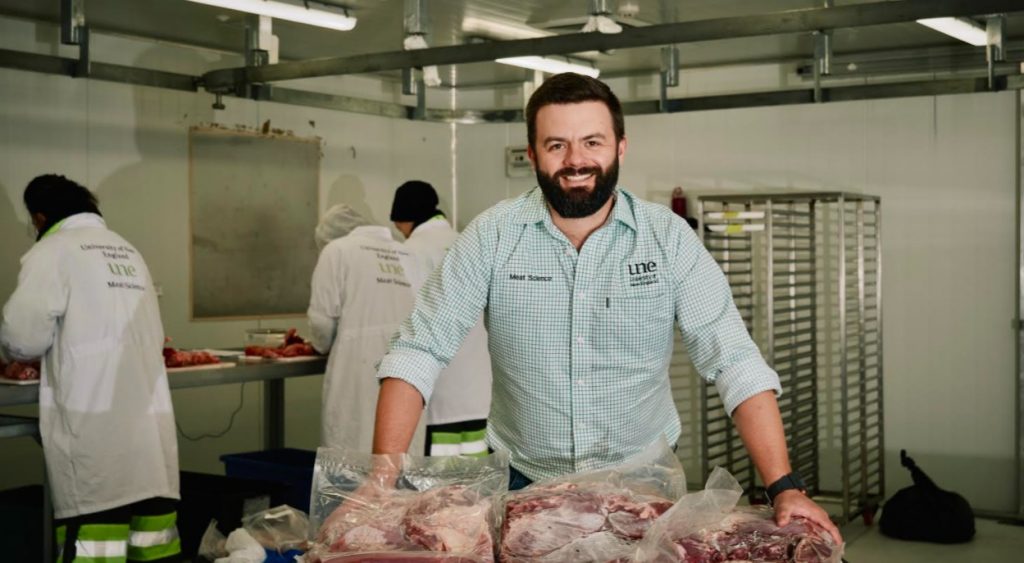
UNE meat scientist Dr Jarrod Lees.
GOAT meat quality parameters and consumer preferences will be fleshed out with a new research study at the University of New England.
UNE meat scientist Dr Jarrod Lees has won the Meat & Livestock Australia Award in the 2021 Science and Innovation Awards for Young People in Agriculture, Fisheries and Forestry.
He will use his $22,000 award to investigate whether something that is currently treated as single product — goat meat — can be differentiated in the market as effectively as beef and lamb.
“Goat meat is healthy, delicious and relatively abundant,” Dr Lees said.
“There is scope to grow a domestic market for a premium goat product, but first we need to establish whether untrained consumers can identify correctly cooked premium cuts, versus the undistinguished chunks of meat that goat is often cooked as.”
Dr Lees will recruit 180 people to sample grilled, roasted and slow cooked goat. He will use the results to look at how elements like the cut, cooking method and characteristics of the carcase affect the tenderness, juiciness and flavour of the goat meat.
He will test various cuts of goat, using different cooking methods, employing the Meat Standards Australia (MSA) consumer taste-testing methods that Australia has perfected over decades to elevate the eating experience of beef and lamb.
Dr Lees will also look at the meat pH, amount of intramuscular fat and shear force preferred by consumers, providing objective measures for eating quality.
He said the goat industry is at a similar place to the beef industry in the early 1990s.
“What they have done is identify what made a certain quality of meat and then focus on getting that consistently.
“If the consumer’s going to spend their hard-earned money on a piece of meat, they need to know that it’s going to be the same as the last time they bought it.”
Dr Lees said MLA found that ‘cultural familiarity’ is a major barrier to the domestic consumption of goat meat.
“I plan to cook goat meat in ways that are familiar to most Australians – grilling, roasting and slow cooking – and then measure what everyday consumers think of the eating experience.
“The cuts we use will also be more familiar, like leg roast or loin steak,” he said.
“This will give us an idea of how consumers respond to goat meat presented in a similar fashion to lamb, which is culturally very familiar.
“It will be a base measurement of eating quality that can only be improved with herbs and spices.”
Dr Lees’ taste-testing will be conducted using Boer goats from a goat breeder and branded meat company.
He acknowledged that most of Australia’s goat meat production comes from wild feral goats, but if there is potential for premium prices for a premium product, goat producers can justify the investment in a breeding program to lift meat quality.

HAVE YOUR SAY